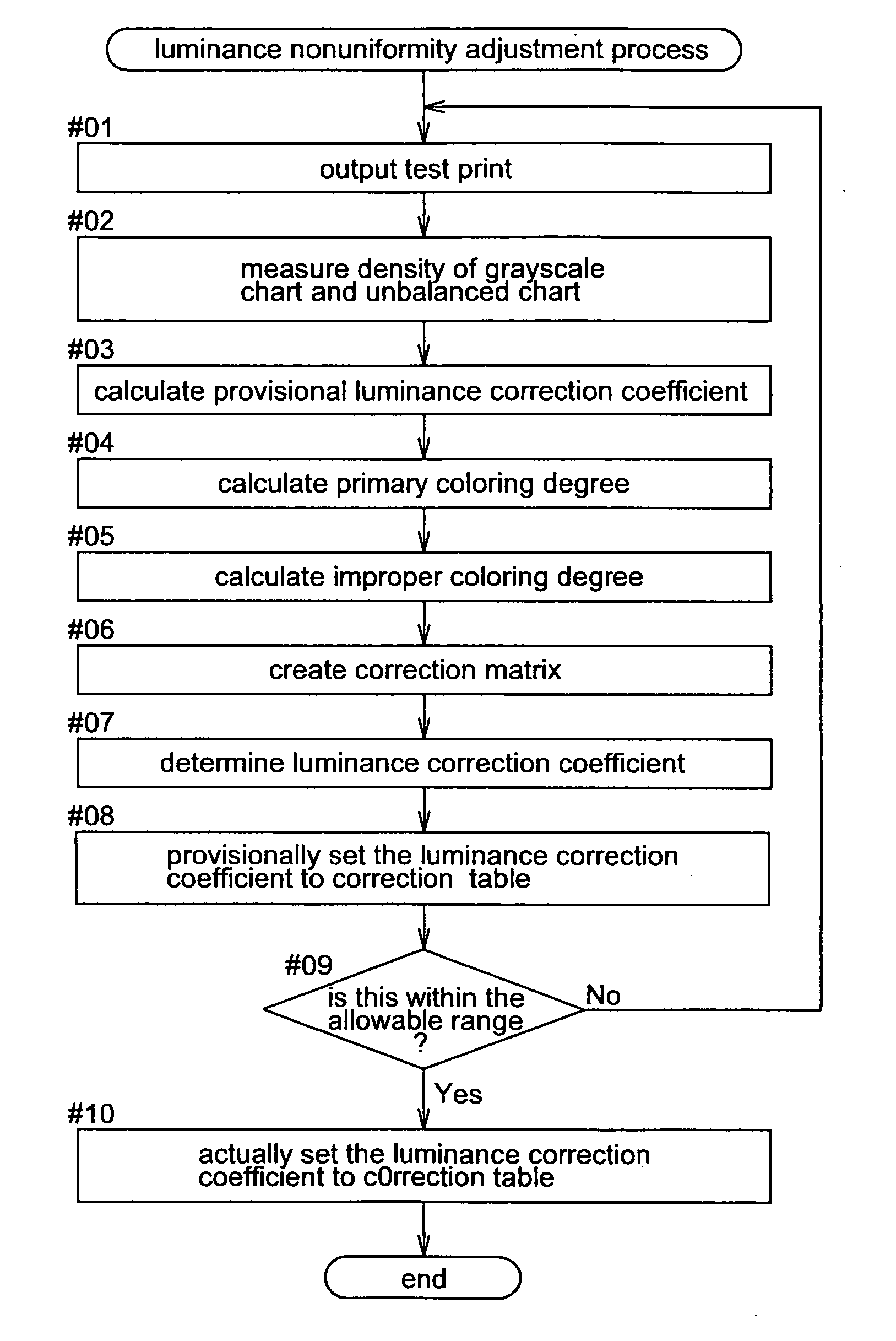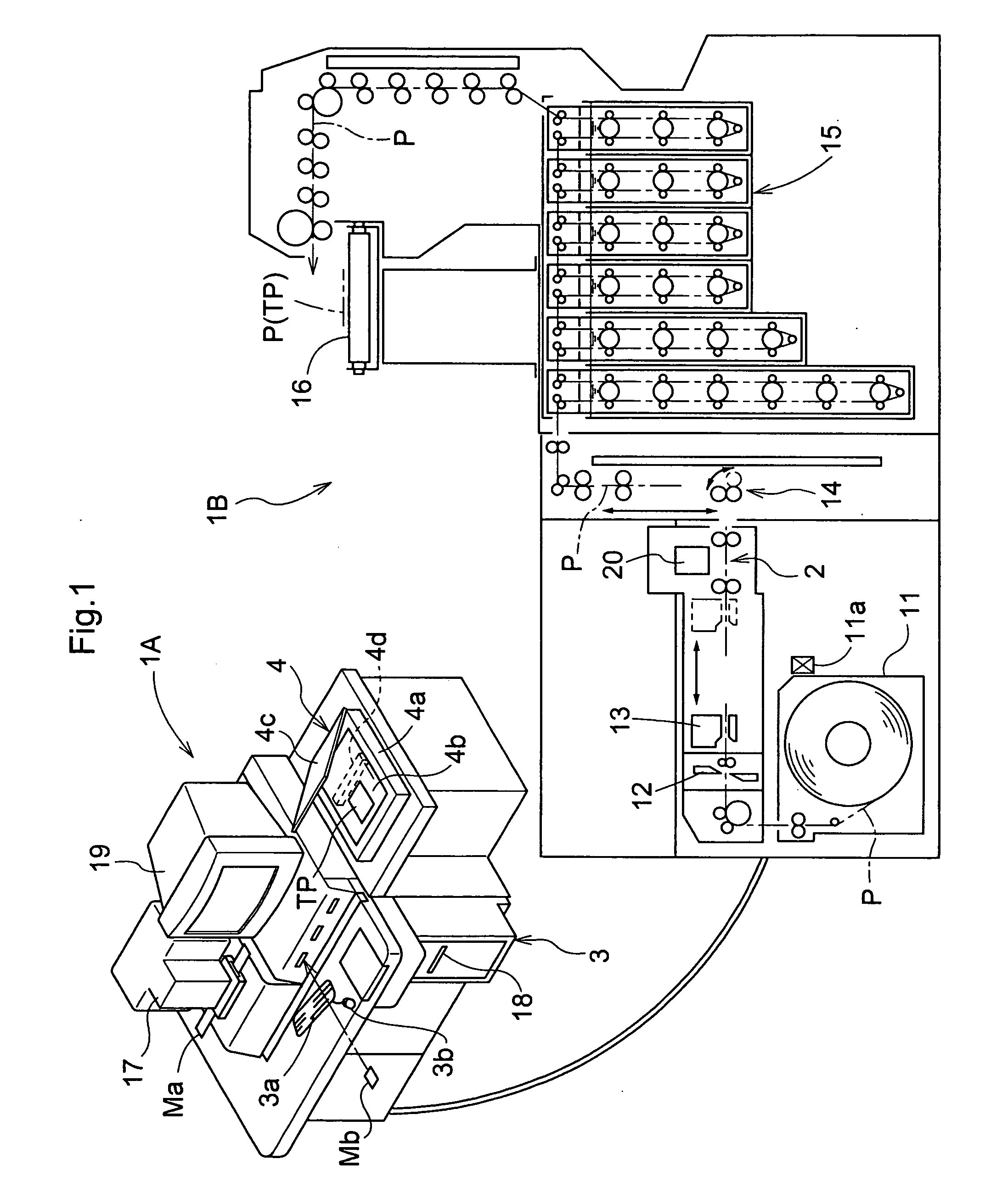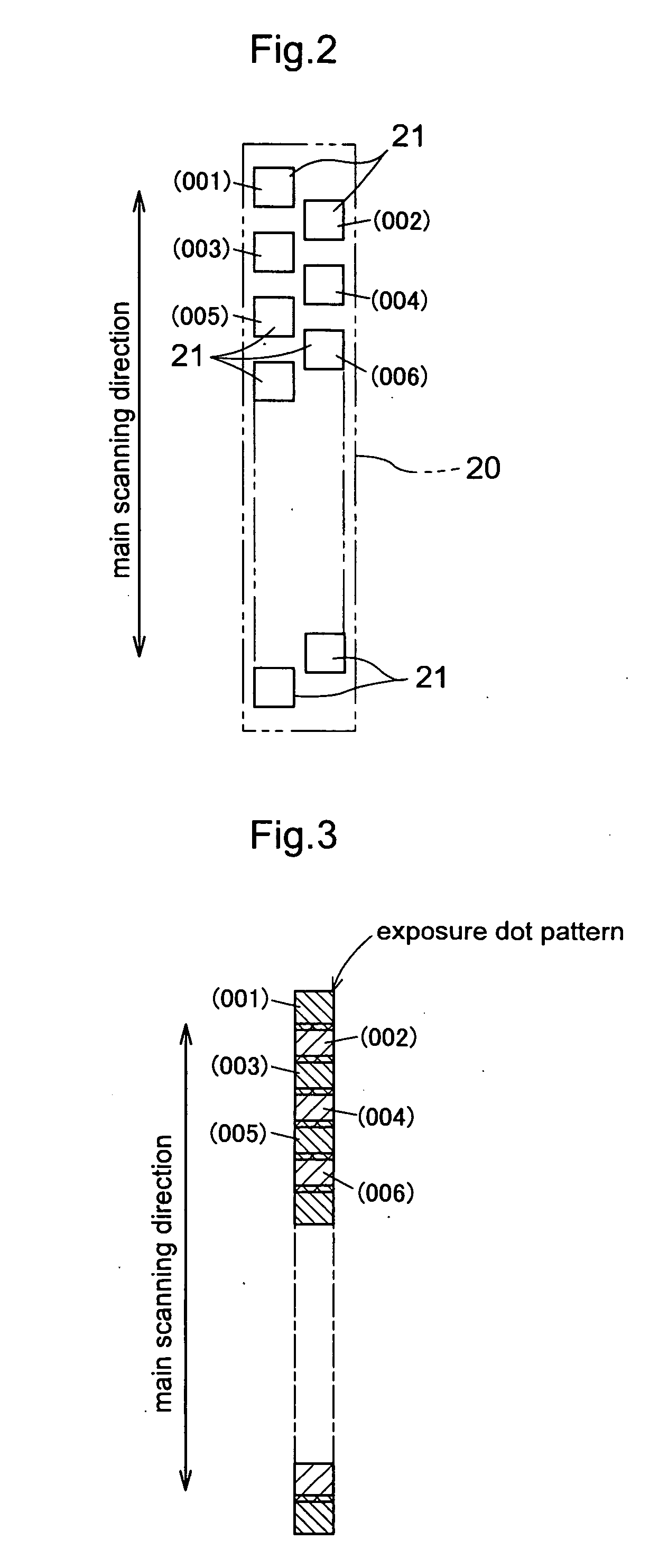Luminance nonuniformity adjustment method and luminance nonuniformity adjustment module using this method
a technology of non-uniformity and adjustment method, applied in the field of luminance non-uniformity adjustment method and luminance non-uniformity adjustment module, can solve problems such as improper coloring and improper coloring, and achieve the effect of inhibiting correction errors
- Summary
- Abstract
- Description
- Claims
- Application Information
AI Technical Summary
Benefits of technology
Problems solved by technology
Method used
Image
Examples
Embodiment Construction
[0024]FIG. 1 shows a digital laser printer serving as an image forming device, which incorporates the luminance nonuniformity adjustment module in accordance with an embodiment of the present invention. The digital laser printer is also called a digital minilab. The digital laser printer comprises a print station 1B that exposes and develops print paper P, e.g., a light-sensitive material and an operation station 1A that performs appropriate image processing on the captured image data, which have been obtained from image recording media such as developed photographic film Ma or a digital camera memory card Mb and then transfers these to the print station 1B.
[0025] The print station 1B draws out roll-type print paper P that is stored in a print paper magazine 11, cuts the print paper P to the print size with a short cutter 12 and transports the cut print paper P horizontally with a paper-sandwiching type horizontal carrying mechanism 13 to an exposure unit 2. The horizontal carrying...
PUM
 Login to View More
Login to View More Abstract
Description
Claims
Application Information
 Login to View More
Login to View More - R&D
- Intellectual Property
- Life Sciences
- Materials
- Tech Scout
- Unparalleled Data Quality
- Higher Quality Content
- 60% Fewer Hallucinations
Browse by: Latest US Patents, China's latest patents, Technical Efficacy Thesaurus, Application Domain, Technology Topic, Popular Technical Reports.
© 2025 PatSnap. All rights reserved.Legal|Privacy policy|Modern Slavery Act Transparency Statement|Sitemap|About US| Contact US: help@patsnap.com



